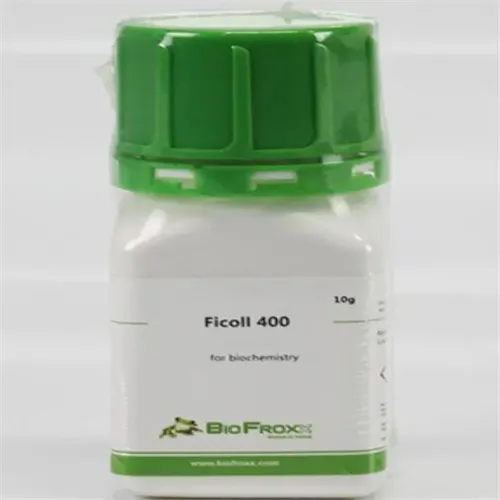Warning: Undefined array key "title" in /home/www/wwwroot/HTML/www.exportstart.com/wp-content/themes/1198/header.php on line 6
Warning: Undefined array key "file" in /home/www/wwwroot/HTML/www.exportstart.com/wp-content/themes/1198/header.php on line 7
Warning: Undefined array key "title" in /home/www/wwwroot/HTML/www.exportstart.com/wp-content/themes/1198/header.php on line 7
Warning: Undefined array key "title" in /home/www/wwwroot/HTML/www.exportstart.com/wp-content/themes/1198/header.php on line 7
- Afrikaans
- Albanian
- Amharic
- Arabic
- Armenian
- Azerbaijani
- Basque
- Belarusian
- Bengali
- Bosnian
- Bulgarian
- Catalan
- Cebuano
- China
- China (Taiwan)
- Corsican
- Croatian
- Czech
- Danish
- Dutch
- English
- Esperanto
- Estonian
- Finnish
- French
- Frisian
- Galician
- Georgian
- German
- Greek
- Gujarati
- Haitian Creole
- hausa
- hawaiian
- Hebrew
- Hindi
- Miao
- Hungarian
- Icelandic
- igbo
- Indonesian
- irish
- Italian
- Japanese
- Javanese
- Kannada
- kazakh
- Khmer
- Rwandese
- Korean
- Kurdish
- Kyrgyz
- Lao
- Latin
- Latvian
- Lithuanian
- Luxembourgish
- Macedonian
- Malgashi
- Malay
- Malayalam
- Maltese
- Maori
- Marathi
- Mongolian
- Myanmar
- Nepali
- Norwegian
- Norwegian
- Occitan
- Pashto
- Persian
- Polish
- Portuguese
- Punjabi
- Romanian
- Russian
- Samoan
- Scottish Gaelic
- Serbian
- Sesotho
- Shona
- Sindhi
- Sinhala
- Slovak
- Slovenian
- Somali
- Spanish
- Sundanese
- Swahili
- Swedish
- Tagalog
- Tajik
- Tamil
- Tatar
- Telugu
- Thai
- Turkish
- Turkmen
- Ukrainian
- Urdu
- Uighur
- Uzbek
- Vietnamese
- Welsh
- Bantu
- Yiddish
- Yoruba
- Zulu
Nov . 06, 2024 14:36 Back to list
The Role of Xanthan Gum in Enhancing Sauces and Dressings for Better Texture
The Role of Xanthan Gum in Sauces A Culinary Perspective
Xanthan gum, a polysaccharide derived from the fermentation of sugar by the bacterium Xanthomonas campestris, has gained popularity in the culinary world, particularly in sauces. This versatile food additive offers multiple benefits, including enhancing texture, stabilizing ingredients, and improving the overall mouthfeel of sauces. In this article, we will explore the various roles of xanthan gum in sauces, its applications, and the reasons for its increasing use among chefs and home cooks alike.
Thickening Agent
One of the primary functions of xanthan gum in sauces is its ability to act as a thickening agent. Unlike traditional thickeners, such as flour or cornstarch, xanthan gum can create a smooth and creamy texture even in small quantities. This characteristic is particularly advantageous for sauces that require a gluten-free option or those with a low-calorie profile. As little as 0.5% to 1% by weight of xanthan gum can significantly thicken a sauce, allowing for precise control over the final consistency without altering the flavor.
Stabilization of Ingredients
Xanthan gum plays a crucial role in stabilizing emulsions and preventing separation in sauces. Many sauces, especially those that incorporate oil and vinegar or water-based components, can be prone to separating over time. Xanthan gum acts as a stabilizer by increasing the viscosity of the liquid, thereby inhibiting the movement of the oil droplets and maintaining a uniform consistency. This feature is particularly beneficial in vinaigrettes, mayonnaise, and creamy dressings, ensuring that they stay well-blended and appealing to the eye.
Enhanced Mouthfeel
The mouthfeel of a sauce can significantly impact the overall eating experience. Xanthan gum can help create a pleasing texture by providing a smooth and silky sensation when consumed. This is especially important in sauces that accompany pasta, meats, or vegetables, where the texture can enhance the perception of flavor. A well-textured sauce can elevate a dish from ordinary to extraordinary, making xanthan gum a valuable tool for chefs aiming to impress their diners.
xanthan gum in sauces

Versatility and Functionality
One of the standout features of xanthan gum is its versatility. It can be used in a wide variety of sauce types, including gravies, barbecue sauces, marinades, and even dessert sauces. Its functionality extends beyond just thickening; it can also be used to stabilize sauces, reduce fat content, and maintain flavor integrity. For example, chefs can create lower-fat versions of creamy sauces without sacrificing texture or flavor by incorporating xanthan gum, making it an excellent option for health-conscious consumers.
Culinary Applications
In practice, the incorporation of xanthan gum in sauces is relatively straightforward. It is often recommended to disperse the xanthan gum in a small amount of liquid before adding it to the main sauce to prevent clumping. Blending it with an immersion blender or using a whisk can help ensure a smooth mixture. The timing of its addition is also crucial, as adding xanthan gum to a hot sauce can lead to a quicker thickening reaction, allowing for greater control over the final consistency.
Moreover, chefs are using xanthan gum creatively in modernist cuisine. Its ability to modify texture and stability has made it a favorite among those exploring molecular gastronomy, where unconventional techniques are employed to reimagine traditional dishes.
Conclusion
Xanthan gum is an essential ingredient in the world of sauces, offering remarkable benefits in terms of thickening, stabilization, and mouthfeel enhancement. Its versatility allows it to be used across a spectrum of culinary applications, making it a staple for chefs and home cooks alike. As the trend for gluten-free and healthier options continues to rise, xanthan gum will likely remain a key player in the sauce-making process. Whether you are developing a classic tomato sauce, a sophisticated emulsified dressing, or exploring innovative culinary techniques, xanthan gum can help you achieve the desired results with precision and ease.
Latest news
-
Certifications for Vegetarian and Xanthan Gum Vegetarian
NewsJun.17,2025
-
Sustainability Trends Reshaping the SLES N70 Market
NewsJun.17,2025
-
Propylene Glycol Use in Vaccines: Balancing Function and Perception
NewsJun.17,2025
-
Petroleum Jelly in Skincare: Balancing Benefits and Backlash
NewsJun.17,2025
-
Energy Price Volatility and Ripple Effect on Caprolactam Markets
NewsJun.17,2025
-
Spectroscopic Techniques for Adipic Acid Molecular Weight
NewsJun.17,2025

